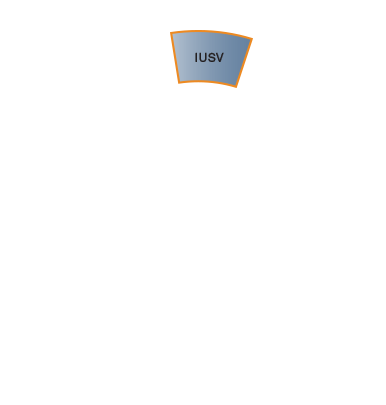Blackrock s iShares ETFs (IVV EMHZ EFA EEM) (BLK EMHZ IVV EFA)
Post on: 6 Апрель, 2015 No Comment

The exchange-traded fund (ETF) industry is still a budding one. ETFs didn’t even exist until the 1990s, and didn’t become commonplace for another decade. Among the earliest players on the scene was iShares. which capitalized on both an underpopulated marketplace and a low barrier to entry to become and remain one of the largest ETF firms in existence. (For more, see: Guide to ETF Providers ).
iShares was founded in 2000 by Barclays Global Investors, then a subsidiary of the famed British bank. BlackRock Inc. (BLK ) bought Barclays Global Investors in 2009 and iShares and all its permutations with it. BlackRock had traditionally sold to institutional investors such as foundations, pension funds and the like. By welcoming ordinary individual investors, BlackRock entered an untapped and burgeoning market. (For more, see: Active BlackRock Marries Passive Barclays -– Can it Work? ).
Variety
iShares investors aren’t hurting for variety. There are 299 iShares ETFs in total, most of them comprised of equities. A plurality of the remainder consist of bonds. There are also five commodity ETFs including one gold and another silver. The 299 ETFs have net asset values ranging from $71 billion to a mere $2.4 million. The latter is the iShares MSCI Emerging Markets Horizon ETF (EMHZ ), launched in October 2014 and consists of positions in Mexican mobile providers and consumer goods makers.
The oldest existing iShares ETFs are an international series that made their Wall Street debut on March 12, 1996. It’s the Morgan Stanley Capital International (MSCI ) series, which includes entrants from Japan, Germany, Switzerland, Canada, Malaysia and the United Kingdom, among others. iShares’ next series debuted four years later and includes BlackRock’s flagship ETF, the Core S&P 500 (IVV ) which is the one with the whopping $71 billion net asset value. It tracks, more or less proportionally, the issues that comprise the Standard & Poor’s 500 index. Apple Inc. (AAPL ) is the ETF’s largest component followed by Microsoft Corp. (MSFT ).
Loading the player.
Creating an ETF that tracks the S&P 500 is not exactly novel or inventive. What distinguishes iShares from many of its competitors is expense ratios. Fees for the Core S&P 500 ETF come in at 0.07%. Contrast that with State Street Global Advisors’ equivalent ETF, the SPDR S&P 500 (SPY ), whose net expense ratio is 35% higher. (For more, see: S&P 500 ETFs: What Every Investor Should Know ).
iShares’ second largest fund, the MSCI EAFE ETF (EFA ), boasts a net asset value of $54 billion. Comprised of 945 issues, its geographical qualifier is a little grandiose. Japan is the only country representing Asia and the Far East among the fund’s significant holdings.
Rounding out iShares’ six largest ETFs are the MSCI Emerging Market (EEM ) with $35 billion in net assets, followed by three ETFs that track Russell indices: the 2000, the 1000 Growth and the 1000 Value which have $27 billion, $26 billion and $25 billion in assets respectively.
iShares vs. SPDRs
Comparing the iShares MSCI EAFE ETF to State Street’s closest analog, the SPDR MSCI EAFE Quality Mix ETF (QEFA ), their quarterly movements are within 11 basis points of each other. Expense ratios are similar, with iShares’ being slightly more expensive at 0.33% versus 0.30%. The SPDR fund’s holdings include many of the same stocks, albeit in different proportions. Its largest include Roche Holding AG (RHHVF ), Nestle S.A. (NSRGF ) and Novartis AG (NVSEF ). (For more, see: What are SPDR ETFs? ).
If iShares and SPDR are offering barely distinguishable variations of the same ETF, the only difference being a few basis points in the expense ratios, why take the one over the other? Or why not go with the third player in the market, Vanguard Group, for that matter?
Speaking of which, it behooves us to compare the relevant iShares ETFs with Vanguard’s offerings. The Vanguard S&P 500 ETF (VOO ) carries an expense ratio of 0.05%. Its MSCI EAFE ETF (VEA ) charges investors 0.09%. (For more, see: A Look at Vanguard’s S&P 500 ETF ).
So what are we missing here? Why isn’t everyone cashing out of iShares and into Vanguard?
Several reasons. First, volume. Through iShares, BlackRock is the world’s largest ETF provider. It offers a variety of ETFs that its competitors don’t. These include ETFs in specialties as narrow as Canada small-cap, yield-optimized bond, treasury floating-rate bond, North American real estate and corporate bonds maturing in a particular year. For targeted investors who want to expose themselves to such a small but potentially rewarding market, it makes sense to keep all their ETF holdings with BlackRock.
Unlike SPDRs, iShares ETFs are not set up as defined portfolios. That means that BlackRock can lend the underlying shares to other firms, providing an alternate if minor source of additional income. More importantly, iShares ETFs can immediately reinvest their components’ dividends. There’s no waiting until the distribution date.
The Bottom Line
Since its inception in 2000 iShares has become and remains one of the largest ETF providers. It offers a smorgasbord of ETFs as broad as any of its competitors. (For more, see: Exchange Traded Funds (ETFs) Tutorials .)














